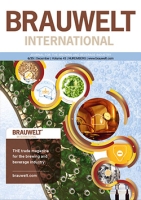How should one proceed when planning a new brewhouse or when extending an existing one? Which considerations or recent insights have to form the basis for the project? Which criteria have to be taken into account now and will also hold good in the future? Part 1 (Brauwelt International, No. 1, 2007, p.28) covered production and working time, monthly output and brews per day, among other things. Part 2 deals with the requirements for brewing vessels in more detail. For reasons of clarity, figures and tables are numbered consecutively, continuing from Part 1.
This contribution is a review of scientific investigations of the Hartong Index at 45 °C (VZ 45 °C) and a discussion of the respective findings. In a previous publication, the authors subdivided issues arising into three major breakdown processes i.e. proteolysis, cytolysis and amylolysis in the malting and brewing process [16]. This article summarises the outcome of the investigations and critically discusses the question whether VZ 45 °C is a useful specification for assessing malt quality.
The Trumer Privatbrauerei Josef Sigl in the Salzburger Land commissioned their new fermentation cellar at the end of 2006. The new building (an investment of 2.6 million EUR) has a capacity of 90 000 hl and is, in the truest sense of the word, characterized by an “open” design, both in its architecture and technical innovations.
Energy consumption data from the “SchoKo” demonstrate that reducing energy usage is not only profitable but also helps improve product quality.
In the summer of 2005, the Kulmbacher Brewery made the decision to retrofit their new brewhouse, manufactured by Huppmann, with a wort precooling system. Tests were conducted on-site during normal operation and were designed to evaluate the efficiency of the wort precooling system with regard to a reduction in DMSP degradation and lower thermal stress to the wort, while sustaining coagulable nitrogen levels.
Efficiency of boiling systems | Part 3 of this series of articles deals with different wort boiling systems established in the brewing industry. The main emphasis is on the difference in efficiencies of individual systems. In the comparison, the degree to which efficiencies of boiling systems investigated differ comes as a surprise.
In modern breweries and beverage production facilities, all aspects of water quality are of great importance; among them are those concerning hygiene. The disinfection of the water used in these facilities, plays a key role because shortcomings in the area of hygiene can have serious, far-reaching consequences. In the last few years, chlorine dioxide has become a frequently used and practical means of disinfection.
A proline-specific protease preparation has been commercially available from DSM Food Specialties since 2005. Called Brewers Clarex™, this product is a highly concentrated solution of a food grade, acid stable enzyme that exhibits a strong preference for cleaving protein chains next to proline residues. The enzyme is added during the primary fermentation phase and is currently marketed as an alternative to PVPP and/or silica treatments. The efficacy of the enzyme is illustrated by the fact that quantities of not more than two ml/hl wort are required to prevent chill haze formation and to produce beers that are completely stable.
Thorough mixing while mashing-in with a clear view of the grist and brewing water in a transparent chamber were the demands placed on the new pre-mashing system by BrauKon GmbH, Truchtlaching. The BrauKon AlloySius pre-masher was developed in cooperation with Banke process solutions which is based in Inning am Holz.
Due to the modifications to wort boiling systems in recent years, the length of time necessary for wort handling has been reduced, in some cases very significantly. The new whirlpool concept described below combines two of the most important functions of hot wort handling, namely, completely removing the solids from the wort and correcting the balance of wort aroma compounds. The wort exiting this newly designed whirlpool exhibits very low values for turbidity which allows for a shorter whirlpool rest, thus reducing thermal stress to the wort which in turn improves the flavor stability of the finished beer.
Many brewers who have worked with a coolship are still very enthusiastic about this system. The technological reasons relate not only to trub separation in the coolship but also involve gentle post-evaporation over its large surface area. But a coolship requires lots of space and is labour-intensive. The risk of microbiological infection of wort is not inconsiderable. These factors led to development of closed wort systems, these came to be widely accepted worldwide meanwhile with the advent of the whirlpool.


